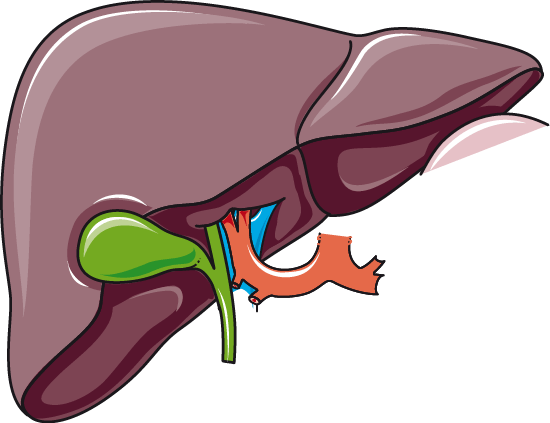When the bile comes up: Do you occasionally have pain after eating?
Anyone who has frequent digestive problems, bloating or upper abdominal pain, especially in the upper abdomen on the right, should see their doctor. You may be plagued by gallstones. The gallbladder is a temporary store of bile. Bile is produced in the liver and released into the small intestine via the common bile duct. We need bile to digest fat. More bile is needed, especially with fatty and flatulent foods, and is also needed from the intermediate store.
Gallstones – A painful evil
If the gallbladder is not continuously filled and emptied via the main duct, the bile can thicken in the gallbladder, crystals fall out and form stones. There are cholesterol stones and bilirubin stones. The stones can be of different sizes, and the number also varies. A simple ultrasound examination by the specialist can determine whether single or multiple stones are present and how large they are.
Small stones have the risk of moving out of the gallbladder into the main duct, this leads to pain called biliary colic. The stones can possibly also block the main corridor. This can lead to jaundice (icterus). If the pancreatic duct is blocked at the same time, life-threatening pancreatic infection can be the result.
Large stones have the risk of irritating the gallbladder, causing infection. The patient feels this as pain in the right upper abdomen. In addition to pain, the infection is noticeable through fever, fatigue, loss of appetite and occasional nausea. A visit to the doctor is necessary to make the diagnosis by means of laboratory tests and ultrasound. The blood count shows elevated levels of inflammation. The ultrasound examination shows the infection as thickening of the gallbladder wall, or as congestion of the gallbladder (hydrops).
Treat infection of the gallbladder surgically
If the gallbladder is inflamed, a quick operation is recommended. Delaying a procedure can make the operation unnecessarily difficult. For gallstones with occasional upper abdominal pain, surgery is recommended to prevent infection of the gallbladder, colic or pancreatitis.
The operation is a simple routine procedure that usually takes no more than 20-40min. The gallbladder (including the stones) can be removed laparoscopically through four small incisions in the upper abdomen. Removing the stones alone is pointless. The disturbed function of the gallbladder is the problem, so in this respect the gallbladder must always be removed, otherwise new stones would form immediately.
After the gallbladder has been removed, digestion quickly returns to normal, and the liver is able to compensate well for the lack of intermediate storage by increasing bile storage in the main duct.
Do you have gallstones and don’t know if you need an operation? In the swiss1chirurgie clinic of Bern Visceral Surgery Steffen AG, they will explain the operation to you. You can find out what can or must be done in a specific individual case from the specialised surgeons in the swiss1chirurgie clinic in a personal consultation.

